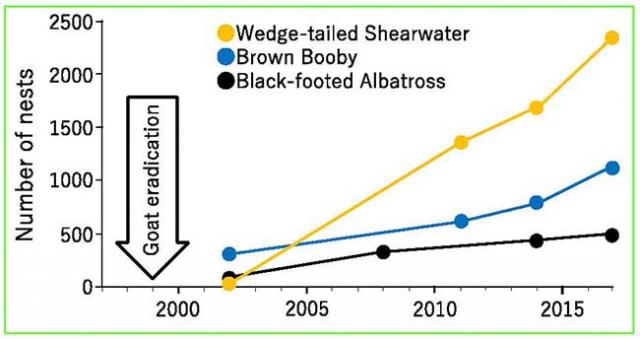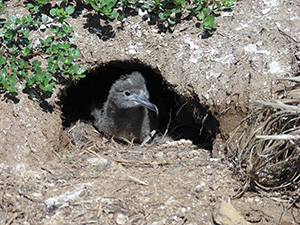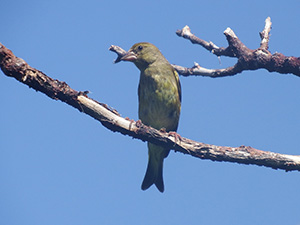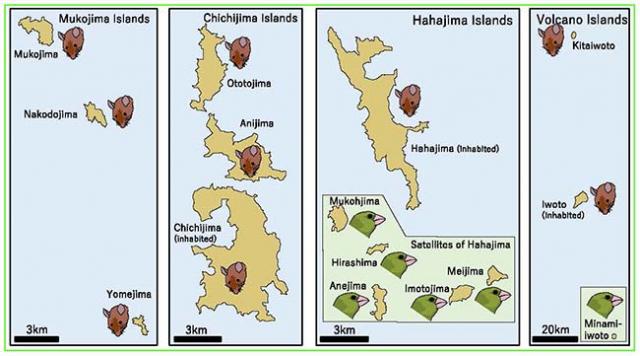Home > Research > Research Results > Research Results 2019 > Increasing the bird population by exterminating alien invasive mammals
Update:December 11, 2019
Main content starts here.
Increasing the bird population by exterminating alien invasive mammals: Success and challenges of nature restoration projects in the Ogasawara Islands World Natural Heritage site
| Article title |
(1) The history of anthropogenic disturbance and invasive alien species impact on the indigenous avifauna of the Ogasawara Islands, southern Japan (2) Rapid increase in seabird breeding population after feral goat eradication on Mukojima, Ogasawara Islands, Japan |
|---|---|
| Author (affiliation) |
(1) Kazuto Kawakami(a) (a) Department of Wildlife Biology, FFPRI, Tsukuba, Ibaraki, Japan. (2) Hajime Suzuki(a), Kazuo Horikoshi(a), Tetsuro Sasaki(a), Kazuto Kawakami(b) (a) Institute of Boninology, Chichijima, Ogasawara, Tokyo, Japan. (b) Department of Wildlife Biology, FFPRI, Tsukuba, Ibaraki, Japan. |
| Publication Journal |
(1) Japanese Journal of Ornithology, 68(2): 237-262, October 2019 DOI:10.3838/jjo.68.237( External link ) (2) Japanese Journal of Ornithology, 68(2): 273-287, October 2019 DOI:10.3838/jjo.68.273( External link ) |
| Content introduction |
The Ogasawara Islands were registered as a World Natural Heritage site in 2011 because of the high value of their ecosystem. In contrast, the native fauna of the islands is threatened with extinction due to invasion by alien species. Of these alien species, goats (Capra hircus) and rodents have invaded approximately 20 and 30 islands, respectively. These invasions have had a great impact on the ecosystem of the islands. Many nature restoration projects are being implemented in the Ogasawara Islands. However, the impacts of the projects and which alien mammals are affecting which native species have still not been completely elucidated. Therefore, there are issues in clarifying the relationships between alien and native species as well as determining the status of native biota recovery after the nature restoration projects. To determine the effects of the extermination of goats, we investigated the recovery of seabird population in Mukojima Islands, part of the Ogasawara Islands, in collaboration with Tokyo Metropolitan Government. Thus, we found that the populations of black-footed albatross (Phoebastria nigripes), wedge-tailed shearwater (Puffinus pacificus), and brown booby (Sula leucogaster) rapidly increased about 15 years after the extermination of goats. Particularly, on Nakodojima Island, where goats had a great influence on the ecosystem, the number of nests of the wedge-tailed shearwater increased from <10 to >2000 (Figs. 1 and 2). It is thought that goats destroyed the nests and interfered breeding by trampling on them. Unlike the seabird population, the endemic subspecies of Oriental greenfinch (Chloris sinica kittlitzi; Fig. 3) has been remarkably decreasing. To determine the cause of this decline, we compared the distribution of the Oriental greenfinch with those of alien mammals. In the past, this bird was widely distributed, but presently, it breeds only on small satellite islands of Hahajima Island and Minami-iwoto Island. We found that the species was extinct on the islands that had been invaded by the alien black rat (Rattus rattus; Fig. 4). The black rat is good at climbing trees and may have attacked the nests and killed the birds. The satellite islands of Hahajima Island, where the Oriental greenfinch still survives, has been invaded by another rat species, Norway rat (Rattus norvegicus). Because of this invasion, it is likely that the Oriental greenfinch population is still decreasing. To protect Oriental greenfinch, we must exterminate the Norway rat. Subsequently, the black rat needs to be exterminated from the former breeding sites to help in the recovery of Oriental greenfinch distribution.
Fig. 1. Increase in seabird populations after the eradication of goats (Capra hircus) on the Nakodojima Island in Mukojima Islands.
Fig. 3. Endangered subspecies of Oriental greenfinch (Chloris sinica kittlitzi)
Fig. 4. Distribution of Oriental greenfinch (Chloris sinica kittlitzi) and black rat (Rattus rattus); the black rat was eradicated from Mukojima Island in 2010 |
Copyright © Forest Research and Management Organization. All rights reserved.




